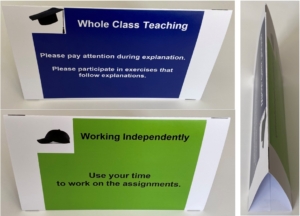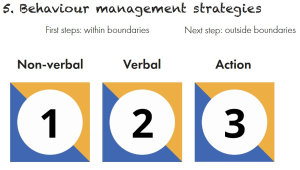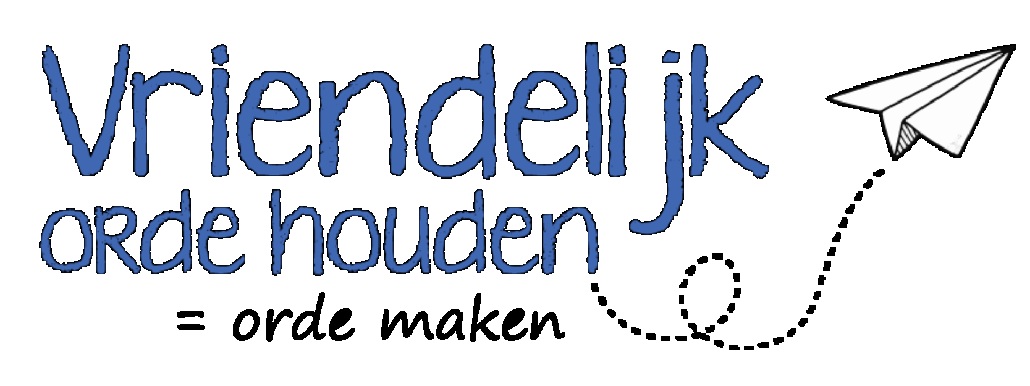Stop being angry
On this page, you’ll find advice on how to get started with Friendly and Fair Teaching
After reading this, continue with the page ‘Tutorial‘ and then ‘How to become a friendly and fair teacher‘.
How do you respond as a teacher when a pupil ignores your instructions? How do you maintain order without getting angry? “I tell my pupils that I’ve decided to stop getting angry, and I explain in three lessons how I plan to do that. This approach strengthens my relationship with my pupils.”
Introduction
When teaching becomes overstimulating, it is difficult to stay calm and reasonable. Often, you get angry in an attempt to stop unwanted behaviour. Over time, some students start to see you as a “bad-tempered” or “unfriendly” teacher, and as a result, they stop following your instructions. Instead, they continue the very behaviour you wanted to end.
Anger then becomes counterproductive — it fuels a vicious circle in which anger and misbehaviour reinforce each other.
Breaking a prohibition is an act of freedom.” Van Gunsteren (2003)
The stricter you are, the more likely students are to break your rules. Being too strict is therefore counterproductive.
Friendly and Fair Teaching shows that it is possible to stop getting angry — and within a short time. When you succeed in staying calm, you conserve energy and rediscover the joy of teaching.
Change
Breaking ingrained habits is hard — think of trying to quit smoking. It takes practice, perseverance, and support.
FFT helps you to break the vicious circle of anger. Two changes are essential:
- Change the measure you use to stop unwanted behaviour.
Instead of giving a student extra work or punishment, you ask them to write a ‘Future behaviour letter‘. - Change the way you respond to students.
You aim to react kindly in every situation, regardless of the student’s behaviour.
Practice period
Everyone — teacher and student alike — has the right to change. During that process, mistakes are part of learning.
Friendly and Fair Teaching helps you to gradually stop reacting with anger during a ‘Practice period‘.
During this period (the duration varies depending on your teaching situation), you tell your students that from now on you will try not to become angry anymore. You explain that you want to be both kind and fair — and that you expect the same from them. You underline this commitment with the ‘Framework‘, which you display clearly on the classroom wall.

Figure: Framework
You also explain that this is a learning process for everyone, and that anyone may — in a friendly way — address unkind behaviour. This makes the approach equal, fair, and participative: everyone benefits and everyone is involved.
In addition, you use the ‘Triangle’ to indicate the working attitude you expect from students during different types of lessons.
The ‘Triangle’ has two sides: one for whole-class teaching and one for independent work.

Figure: Triangle
With the ‘Framework‘ and the ‘Triangle‘, you create clarity and predictability in your classroom.
Introducing the three steps
In the first three lessons of the ‘Practice period‘ (a total of eight lessons), you introduce the three steps for addressing behaviour and effort — in reverse order:
- You start with the ‘Future behaviour letter‘, which invites a student to reflect on their behaviour and how to improve it.
- Then, you introduce the ‘Tip‘ — a positive piece of advice that comes before the letter.
- Finally, you introduce the ‘Gestures‘, which allow you to subtly guide or correct students’ behaviour and effort.

Figure: Introduction Practice Period
From the third lesson onward, you apply the procedure: first Gestures, then – if necessary – a Tip, and only in exceptional cases a Future behaviour letter.

Figure: Behaviour Management Strategies
The first two steps — ‘Gestures‘ and ‘Tip‘ — usually make the third step, the ‘Future behaviour letter‘, unnecessary.
Letting go of old (tense) patterns
Stopping might be less problematic if we developed a richer repertoire of ways to stop, and used them more cheerfully and playfully. Stopping as a positive act.” Van Gunsteren (2003)
Friendly and Fair Teaching enables you to gradually replace being ‘lenient’ or ‘strict’ with being ‘friendly and fair’. The longer you persist in responding kindly, the more the old, tense patterns fade into the background. The more kindly you learn to see your students while taking the three steps (Gestures > Tip> Letter), the faster those old patterns disappear.
When students see, week after week, that you no longer get angry — that you have truly stepped out of the vicious circle — they begin to take your guidance seriously. They become cooperative, show respect, and behave more positively during lessons.
Summary
To break the cycle of anger and unwanted behaviour:
- Use the Framework to make clear what general attitude you expect from your students.
- Use the Triangle to clarify expectations for each type of lesson.
- Ask a student to write a Future behaviour letter to help find constructive solutions.
- Use Gestures and Tips, which make the letter rarely necessary.
- Create a classroom environment where everyone can be both kind and clear.
Those who stop being angry gain calm, energy, and respect — and help their students learn the same.
Ready to start?
Read the full Practice period guide here.
Also explore the accompanying exercises for the Practice period.



